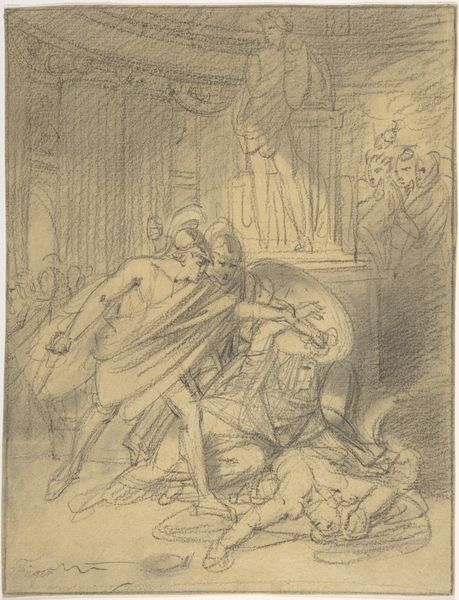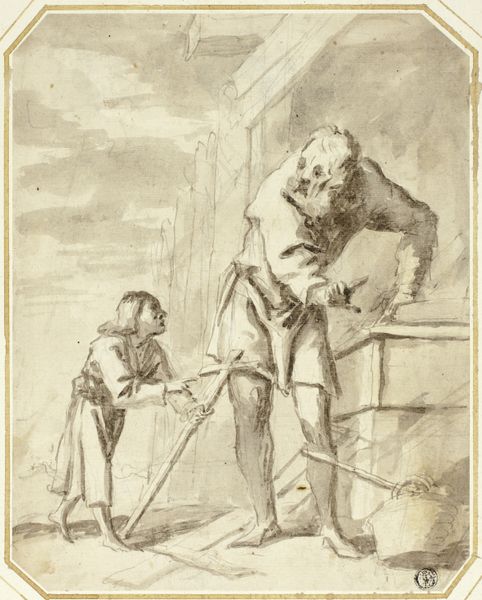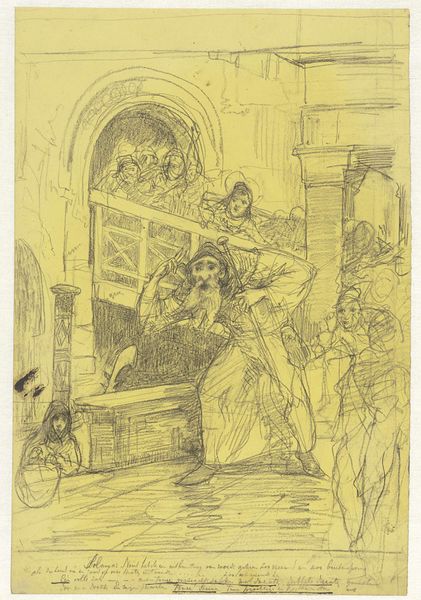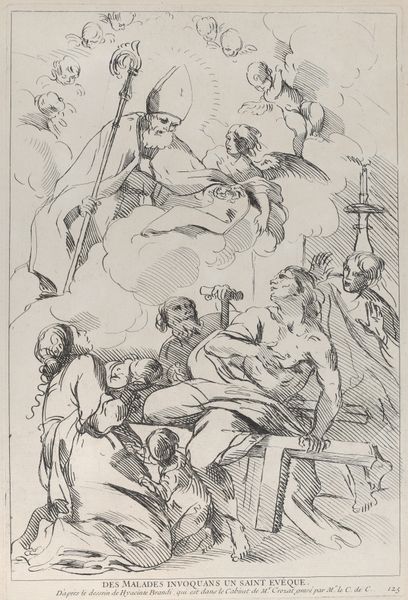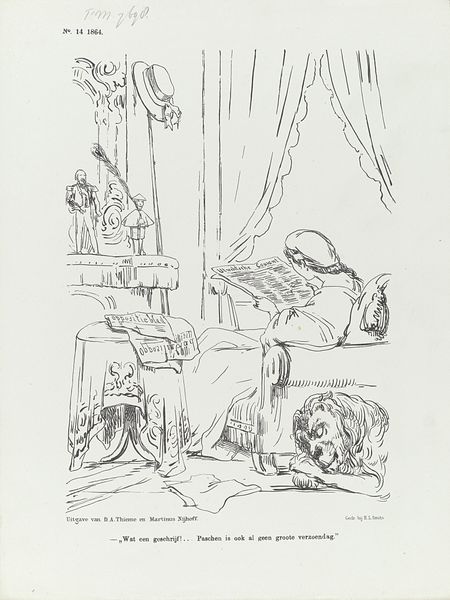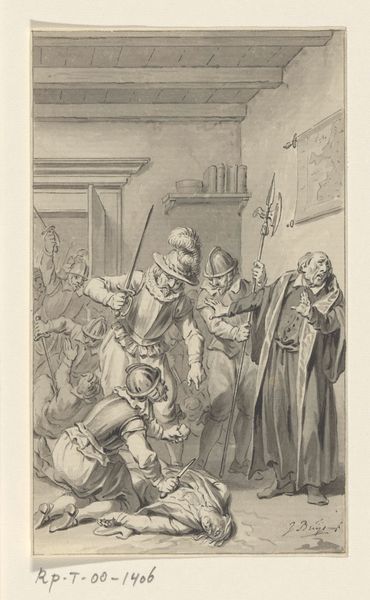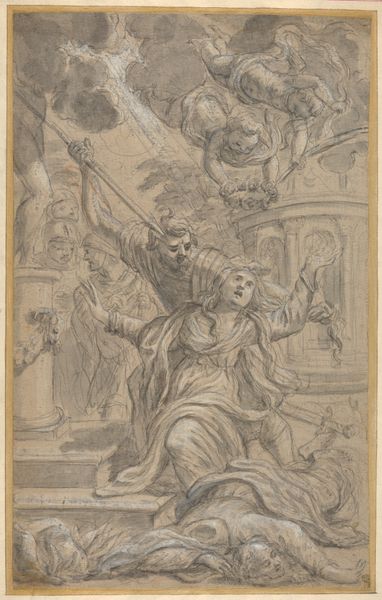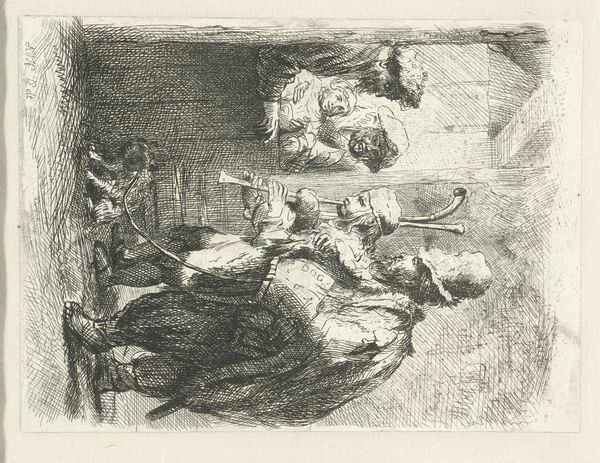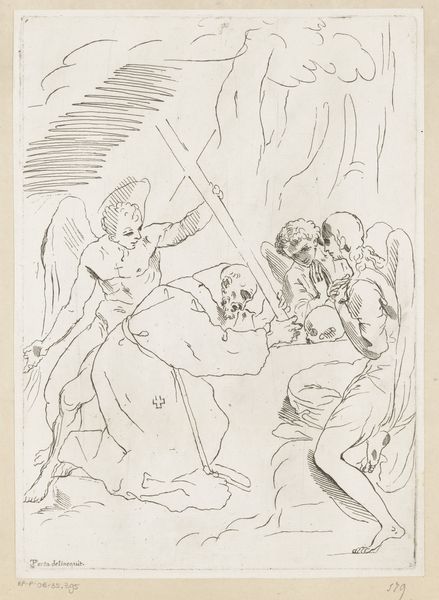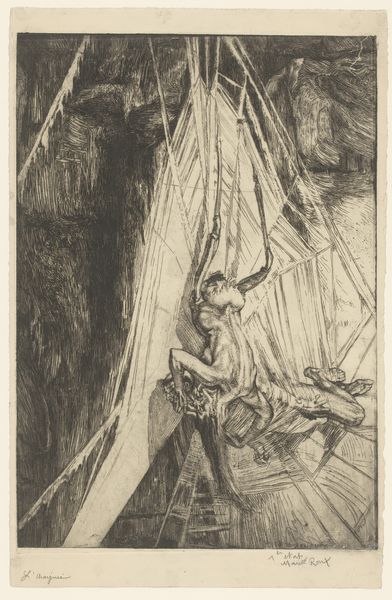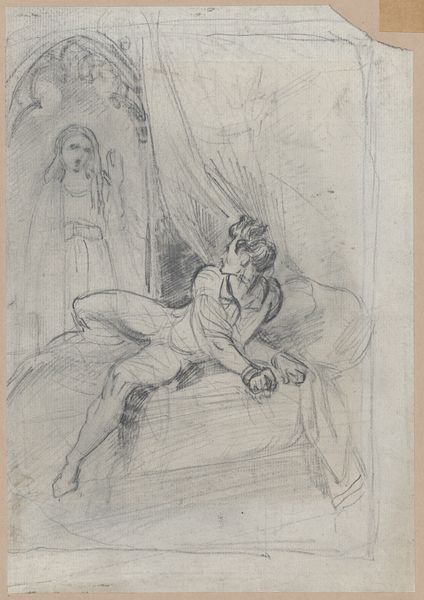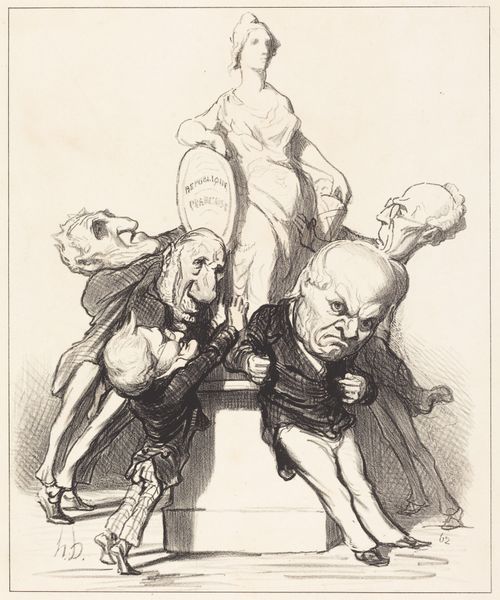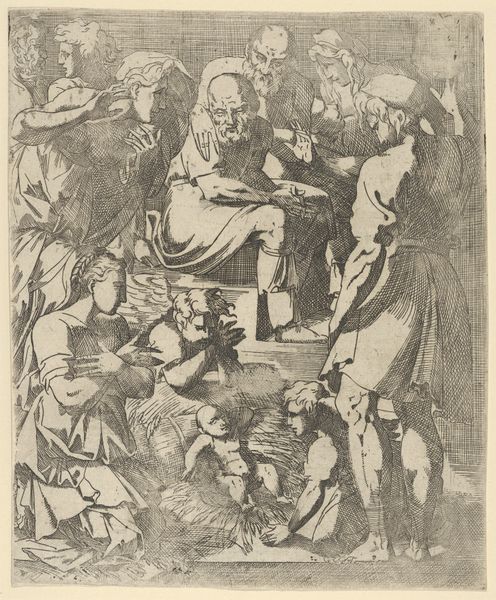
Dimensions: Mount: 20 3/8 × 14 9/16 in. (51.8 × 37 cm) Sheet: 15 1/16 × 10 13/16 in. (38.2 × 27.4 cm)
Copyright: Public Domain
Editor: Here we have "Repentance of St. William," a print made with ink and engraving by Vincenzio Vangelisti sometime between 1764 and 1798. The cross-hatching creates so much movement! What stands out to you about it? Curator: What I find compelling is thinking about the materials themselves and how they were deployed within a specific social framework. Engravings, especially prints like this, existed within a system of reproduction, disseminating images and ideas. How did access to the materials – ink, copper plates, the printing press – influence who got to see and interpret this image of repentance? Editor: So you’re saying the *availability* of the art form itself is key to understanding the work? Curator: Precisely! The materials and process weren't neutral. The rise of printmaking allowed for wider distribution compared to unique paintings, but access to producing and owning these prints would have been dictated by social class, education, and access to the means of production. Think about the labor involved in creating the copperplate, the ink-making processes, the social structures of workshops where this print may have been made. Editor: That’s a really different way of thinking about it! I hadn’t considered the impact of mass production on something that looks so historical and unique. Curator: Consider who was buying these prints? Were they used for devotional purposes, historical record, or as interior decoration in wealthy homes? The print's purpose would inform its reception and, consequently, its social meaning. Editor: Thinking about its distribution really changes the piece for me. I’m considering a whole new set of questions about production and viewership, which makes it even more intriguing. Thanks for opening my eyes to this!
Comments
No comments
Be the first to comment and join the conversation on the ultimate creative platform.
